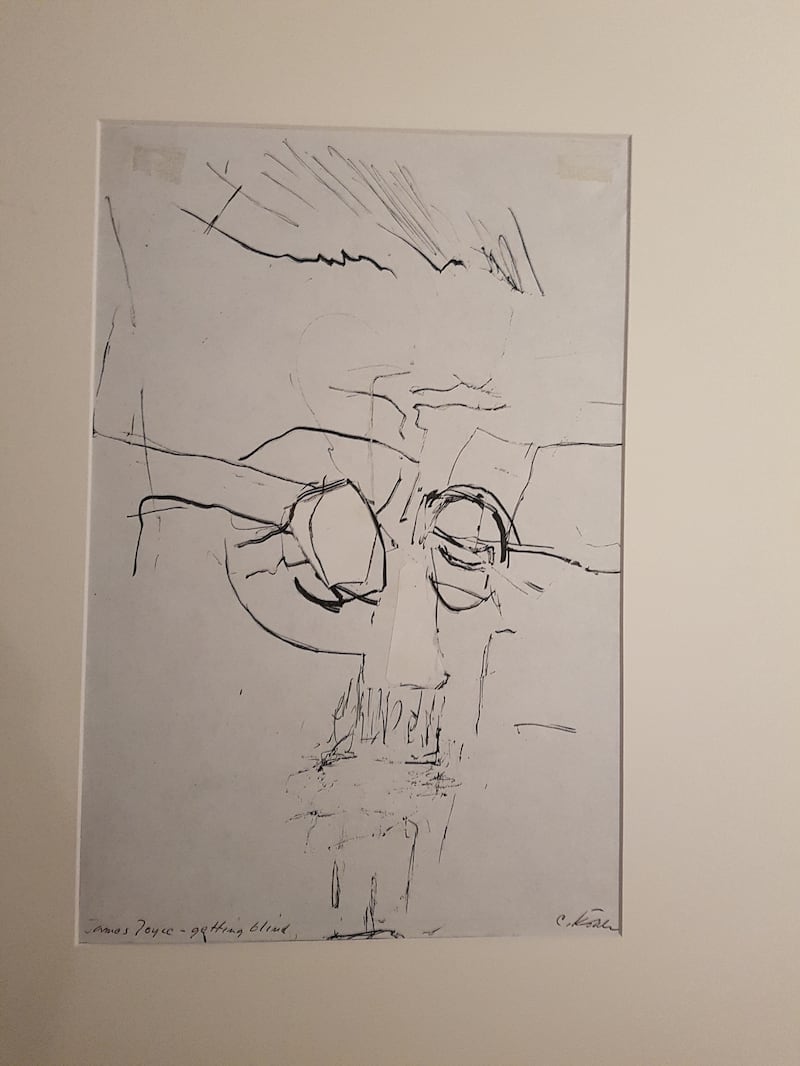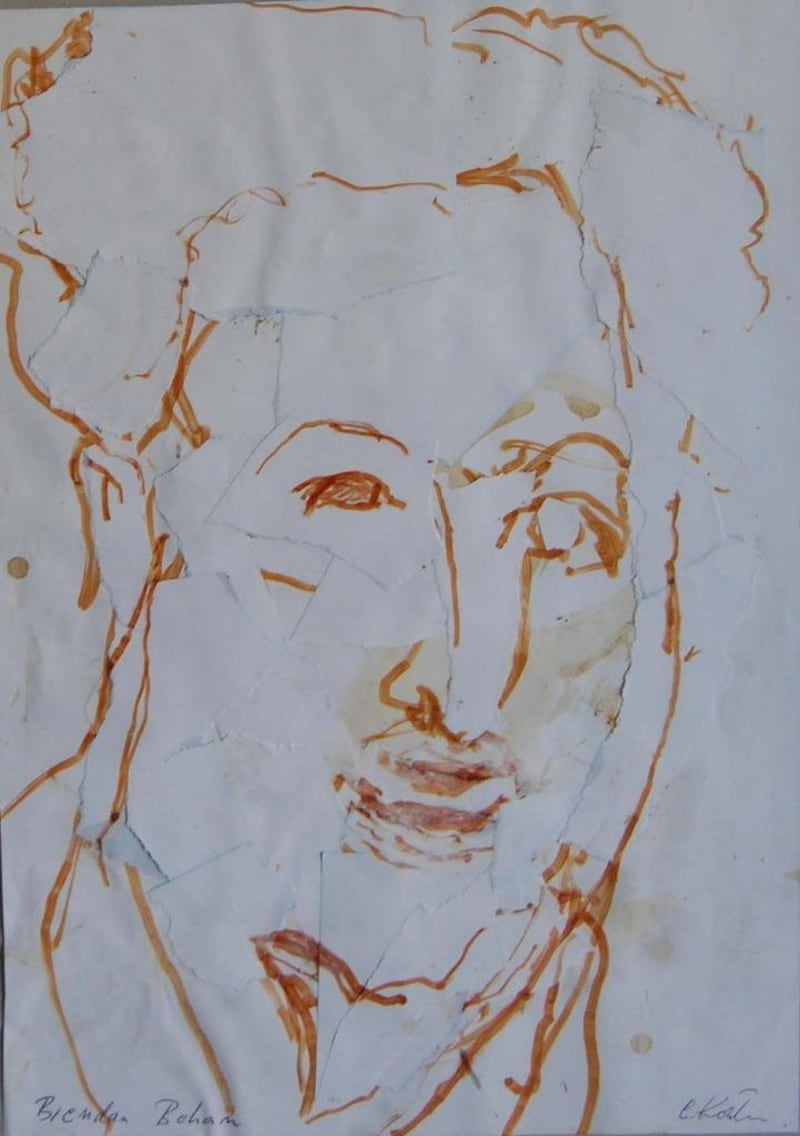The Irish Cultural Centre (ICC) in Hammersmith, London has just announced the acquisition of three significant pieces of art, portraits of Samuel Beckett, James Joyce and Brendan Behan. Unusually for the centre, which has been exhibiting the work of Irish artists since its foundation in 1995, these portraits are by the Swedish artist Carl Köhler.
The arrival of the paintings came after some international negotiations on Twitter with various institutions, including Trinity College, vying for the artworks.
The ICC won out with a promise to exhibit the portraits permanently at its smart new building in west London. Founded in 1995, the centre was for many years a hub for the Irish community in London with regular Irish music and other cultural events until the Conservative-led local council announced its decision to sell off the land.


Following a £3.5million fundraising campaign, and with the help of the Irish Government, the centre was completely rebuilt and reopened in 2017. Since then, some of Irelands leading musicians have performed there including Donal Lunny, Dervish, Altan, Sean Keane and others.
The centre now runs the most extensive and diverse Irish cultural programme outside of Ireland covering music, art, theatre, literature and comedy as well as talks and lectures on Ireland’s historical legacy. Its patrons include Edna O’Brien, former President Mary McAleese, Adrian Dunbar, Feargal Keane, Dara O’Briain and others.
Carl Köhler passed away in the summer of 2006, leaving behind his wife Sinikka, son Henry and daughter Frida. When Peter Power-Hynes, the new chairman of Irish Cultural Centre, Hammersmith, discovered a tweet from Henry Köhler indicating he was looking for a permanent home for his father’s portrait of Samuel Beckett at a suitable Irish institution, he started a negotiation with Henry via Twitter which led to the permanent donation not just of the Beckett portrait but also portraits of James Joyce and Brendan Behan.
Power-Hynes said: “We very much appreciate the kind donation of these three portraits by Henry and his sister Frida. I was eager to acquire the Beckett portrait for the ICC given that for decades we have focused on showcasing the best of Irish culture including its rich literary and artistic heritage. To have then been donated the Joyce and Behan portraits as well was a very generous gesture on the part of the Köhler family.
“These unique portraits of some of Ireland’s most famous literary figures hang beautifully alongside the other artworks adorning our walls and will stand as a fitting tribute not just to Samuel Beckett, Brendan Behan and James Joyce but to Carl Köhler himself.”
Reflecting something of Köhler’s obsession with authors and composers, though he painted other subjects as well, the family previously donated portraits of Henry Miller, James Joyce and Russian poet Anna Akhmatova to Victor Hugo House in Seattle and six other portraits to the US Library of Congress.
In fact, Köhler painted a series of Joyce portraits tracking the Ulysses author’s loss of sight. He also devoted himself to painting moving bodies on stage from the world of theatre and ballet.
The newly donated paintings are fine examples of Köhler’s style. An idiosyncratic combination of ink and collage, they feature slivers of glued paper that provide a textured canvas for the drawing of the portraits.
Köhler never actually met any of the subjects but was drawn to them by his interest in writing, music and literature.
Henry Köhler remembers a childhood surrounded by music, culture and copious Ingmar Bergman movies. His father had a huge library with all kinds of exiting books for a young boy to read – Erica Jong, Henry Miller, Anais Nin and others. After a couple of glasses of wine, Köhler senior would play feverishly on the piano or have intense discussions about literature and art with his Henry’s mother, who passed away in 2011. He often appeared to be buried deep in contemplation about the meaning of art or the writings of his favourite world-famous authors.
The artist’s death in 2006 hit Henry Köhler hard. “It was a huge loss,” he says. “I loved him very much and we where good friends even though there was 48 years between us. He was not the traditional football-dad and we did not grow up in a traditional way.
Traditional his father definitely was not. He would walk down to his local Stockholm shop hear the family home in his bathrobe and slippers to get the morning paper. He lived a life without compromise, unconcerned about what others thought of him.
The artist’s father was an associate professor in chemistry and a visual artist. His mother was a concert hall singer and pianist, so it is clear where his artistic and musical leanings came from.
In 2007, Henry Köhler began a mission to honour his father and what he saw as the painter’s special gift. He said: “He had a unique talent when it came to seeing the inner person as well as their faces.” Exhibitions were organised at the Stockholm Concert Hall, the Stockholm August Strindberg Museum and then across the Atlantic in major US and Canadian libraries and universities. At one point, portraits were exhibited in Ireland at Cork University library.
Henry Köhler’s devotion to his father and his art is evident. “It’s been an adventure to promote my father. I hope my work over the years will give him the recognition he deserves and that he will be remembered in the art and literature world as an artist with a special talent,” he says.
More recently, Köhler has discovered a new tool in Twitter through which he found out with much joy that people like actor Alec Baldwin, American writer Joyce Carol Oates and British historian Simon Schama have written about his father’s artworks.
And it was through Twitter that the Irish Cultural Centre managed to acquire their three new artworks. One wonders if Carl Köhler himself would have embraced the ubiquitous social media platform to promote his own art if he were alive today. In any event, Henry Köhler will be pleased his father's work has gone on permanent display in another major cultural institution.
Carl Köhler's portraits are on display at the Irish Cultural Centre, 5 Black's Road, Hammersmith, London W6 9DT. An official unveiling in the presence of the cultural attachés from the Swedish and Irish embassies in London will take place later this summer. irishculturalcentre.co.uk



















